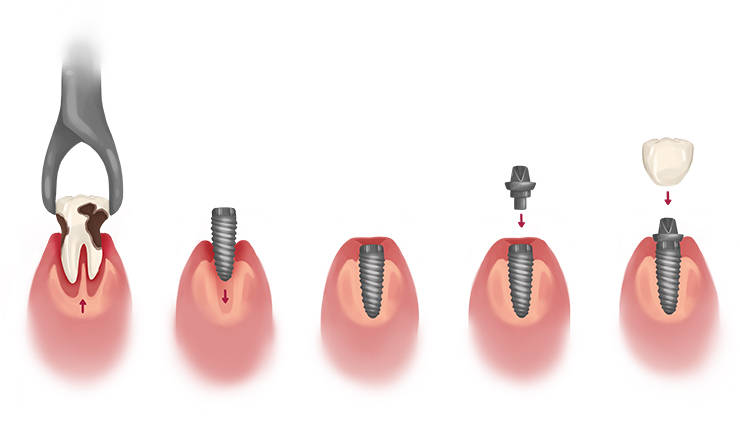What is the process of endosteal dental implant?
Endosteal dental implants are the most prevalent type of dental implant. In these implants, the dentist inserts small screws placed into the patient's jawbone that assists as an artificial root to hold the new, replaced tooth. Compared to stainless steel, titanium is durable and volatile while being repellent to corrosion and less expected for the body to reject; thus, it is used in the endosteal implant. Here's the process that the dentist will follow for an endosteal dental implant.
- Check for Viability: Your dentist will ascertain if endosteal implants are the best thing for you. Along with a missing tooth, other important rules you should meet must include:
- Good health
- Good oral health
- Should have no periodontal disease
- Have a completely developed jawbone
- You should not use tobacco.
- Consultation With the Patient: The process will begin with a dental professional's consultation to see if you are a good appellant for endosteal implants. In this step, the dentist will elaborate you the entire process and the fees required.
- Removal of Your Damaged Tooth and Bone Grafting: Once considered a good endosteal implant patient, you'll get an appointment to remove the broken tooth and perform bone grafting if required. During the actual endosteal implant surgery, local anesthesia, sedation, or general anesthesia is used to feel no pain during the implant procedure. The type of anesthesia applied is something you should consult with your dentist during your consultation.
- Preparation for Inserting Your Implant: Once numb, a small surgery is made in the gum, and a drill is used to go into the jawbone, where the dentist will place the screw. An abutment is used on top of the screw, extending the metal post where the new tooth is attached. Your jawbone will grow into the implant, and this process can take from two to six months till a firm base is formed for the new tooth. Often, a temporary denture is used to reduce the gap while the screw and jawbone fuse and repair.
- Attachment of an Abutment: Once the titanium implant has taken its grip, your dentist will again make a small cut to connect the abutment. It is the part that stretches just above the gum where the tooth will be attached.
- Taking Impressions to Make Your Crown: Two weeks after the abutment is placed, you can anticipate heading back to the dentist to give the crown's impression.
After the crown is fixed, you can now say that the endosteal dental implant is successful. If you need to have an endosteal dental implant, you can contact TeethCare Multispeciality Dental Clinic or visit the website dentalclinckolkata.in.

